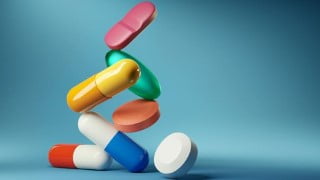Free Chemistry Tutorial – Antibiotics
Learn about antibiotics, their nomenclature, classification, and different types such as B-lactam and non-lactam antibiotics. Understand their mechanism of action in fighting bacterial infections and how they inhibit bacterial growth. This course is suitable for HSC passed students and DPharmacy students.
Introduction to antibiotics, nomenclature, classification, B-lactum antibiotics, Non-lactum antibiotics, microlide antibiotics
Antibiotics– Benzyl penicillin*, Phenoxy methyl penicillin*, Benzathine penicillin, Ampicillin*, Cloxacillin, Carbencicillin, Gentamicin, Neomycin, Erythromycin, Tetracycline, Cephalexin, Cephaloridine, Cephalothin, Griseofulvin, Chloramphenicol.
•Antibiotics are medicines that help stop infections caused by bacteria.
• They do this by killing the bacteria or by keeping them from copying themselves or reproducing.
• The word antibiotic means “against life.”
• Any drug that kills germs in your body is technically an antibiotic.
• Antibiotics are the chemical substances derived from or metabolically produced by living organisms, which are capable of inhibiting the life processes of other microorganisms,in small concentration.
• It also includes the synthetic compounds which are structural analogues of naturally occurring antibiotics.
•Antibiotics should only be prescribed to treat health problems: that are not serious but are unlikely to clear up without antibiotics – such as acne.
• Antibiotics fight bacterial infections either by killing bacteria or slowing and suspending its growth.
• They do this by: attacking the wall or coating surrounding bacteria. interfering with bacteria reproduction.
•Thus ampicillin, though not produced by living organisms, is a structural analogue of benzyl penicillin. Hence it is an antibiotic.
Antibiotics– Benzyl penicillin*, Phenoxy methyl penicillin*, Benzathine penicillin, Ampicillin*, Cloxacillin, Carbencicillin, Gentamicin, Neomycin, Erythromycin, Tetracycline, Cephalexin, Cephaloridine, Cephalothin, Griseofulvin, Chloramphenicol.
•Antibiotics are medicines that help stop infections caused by bacteria.
• They do this by killing the bacteria or by keeping them from copying themselves or reproducing.
• The word antibiotic means “against life.”
• Any drug that kills germs in your body is technically an antibiotic.
• Antibiotics are the chemical substances derived from or metabolically produced by living organisms, which are capable of inhibiting the life processes of other microorganisms,in small concentration.
• It also includes the synthetic compounds which are structural analogues of naturally occurring antibiotics.
•Antibiotics should only be prescribed to treat health problems: that are not serious but are unlikely to clear up without antibiotics – such as acne.
• Antibiotics fight bacterial infections either by killing bacteria or slowing and suspending its growth.
• They do this by: attacking the wall or coating surrounding bacteria. interfering with bacteria reproduction.
•Thus ampicillin, though not produced by living organisms, is a structural analogue of benzyl penicillin. Hence it is an antibiotic.
Who this course is for:
- HSC passed students and DPharmacy students
User Reviews
Be the first to review “Free Chemistry Tutorial – Antibiotics”
You must be logged in to post a review.







There are no reviews yet.